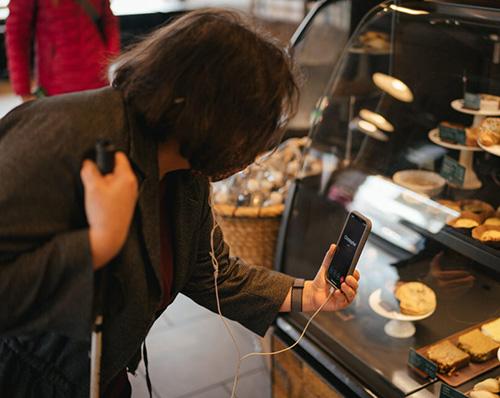Starbucks launches technology to make stores more accessible to visually impaired

Starbucks Corp. is partnering with a technology company to make it easier for customers with vision problems to shop its stores.
The coffee giant has partnered with San Diego-based Aira Tech Corp. to offer customers free access to Aira, a service that connects blind and low-vision people to remotely located agents who share visual information through an app. The service is now available in all company-operated and licensed Starbucks stores in the United States.
When a customer enters a Starbucks, they can open up the Aira app, which is free to download for iOS and Android. The customers will then be connected with someone who can see their surroundings through their phone’s camera and provide needed descriptions, from describing the items in the pastry case to reading in-store signs to finding amenities such as the restroom.
Starbucks first tested the service in seven U.S. cities early this year, including at its “signing store” in Washington, D.C., one of nine such stores globally that provide a space for the deaf and hard of hearing community to connect through sign language. Customer reaction to Aira “has been nothing short of positive,” said Matthew Gilsbach, store manager at the D.C. store.
“It’s one more tool that we can use for customers to be themselves and be independent,” he said.
Starbucks said that offering Aira is part of its ongoing commitment to inclusion, diversity and equity and efforts to enhance accessibility of the Starbucks experience for employees and customers, starting from the early stages of design. This summer, the company will roll out new large-print and Braille menus in all U.S. and Canada stores, developed through a partnership with National Braille Press.
In addition, Starbucks is focusing on accessibility for its employee experience. The company is testing of clear face masks for employees, which are now provided to all deaf and hard of hearing associates in Starbucks U.S. retail, non-retail, distribution centers, and roasting plants.
Other projects include more accessible store equipment, such as a new coffee brewer with large tactile buttons and haptic and visual feedback features, and cold cups that feature tactile bumps and high contrast lines for measuring.

